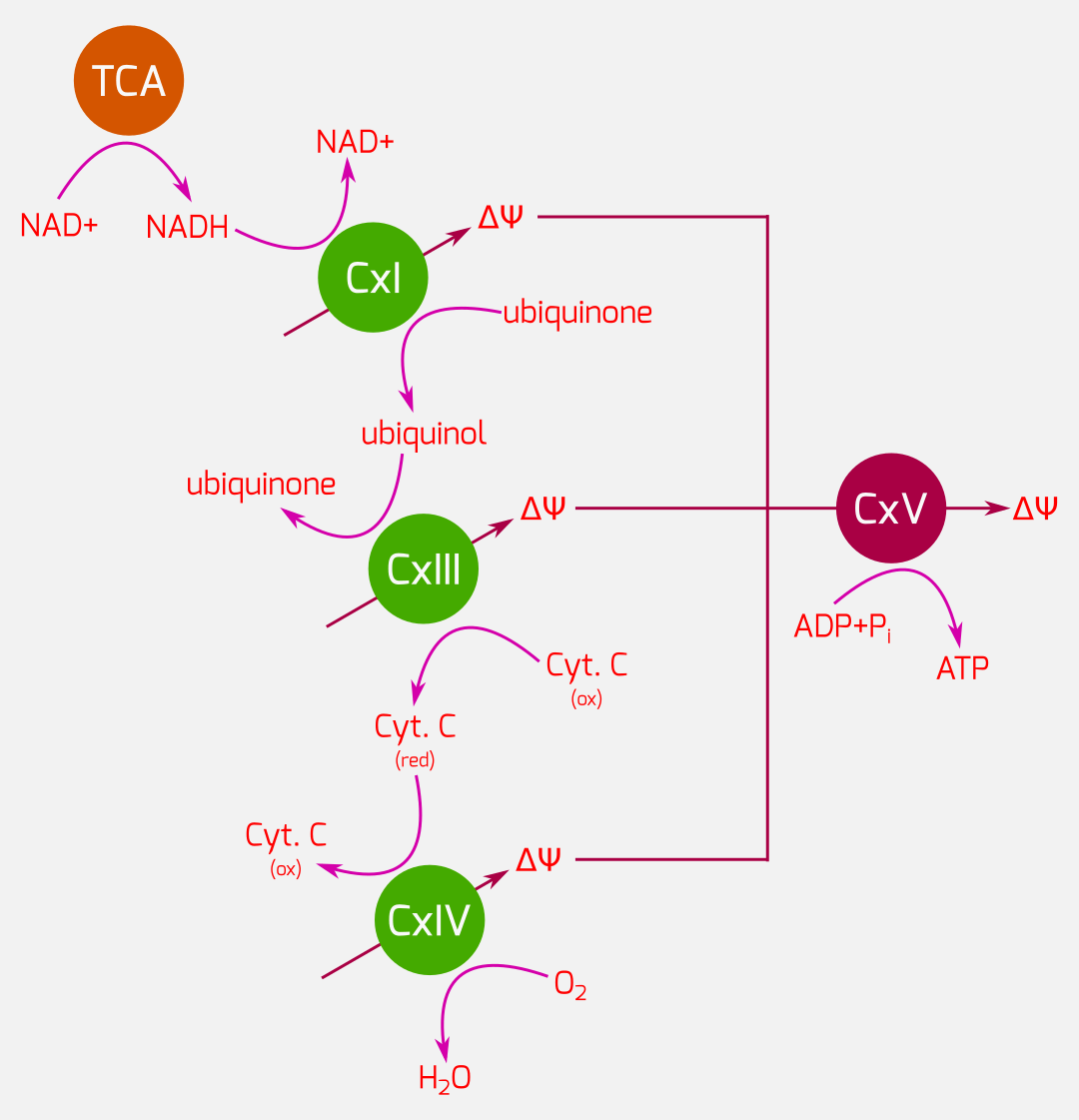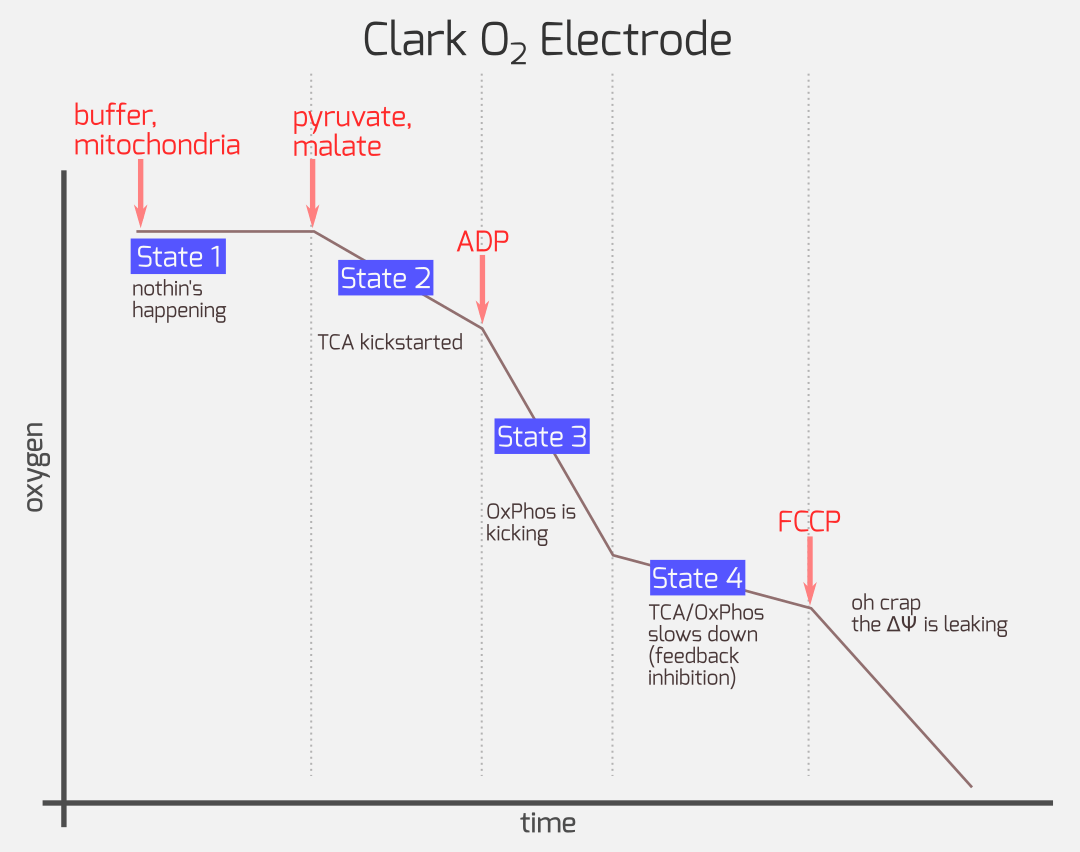I first learned about the tricarboxylic acid and the oxidative phosphorylation pathway (TCA-OxPhos) when I was at INTEC. I learned it again in Intro Bio II (I think), and again in Cell & Molecular Biology, and again in Biochemistry I. And here at URMC, I learned it again in Cell Biology.
But after repeating it a number of times, finally I can really appreciate this pathway, especially the OxPhos. By the way, OxPhos is operated by series of electron transport chain (ETC).
 Oxidative Phosphorylation (Complex II not shown). CC-BY 4.0
Oxidative Phosphorylation (Complex II not shown). CC-BY 4.0
This chart is for me to understand the flow of electron from the one of the TCA’s end products, the NADH. Complex I (CxI) consumes the NADH, generating the proton gradient (ΔΨ), then exporting electron to the CxIII via the ubiquinol, then CxIII does its job… yeah, you get the idea (and I am too lazy to go into the details).
One of the most important aspects that we learned in Cell Biology here at URMC is the concept of mitochondrial coupling process: CxI-CxIV generates ΔΨ for the eventual consumption by the CxV (a.k.a the ATP synthase). If there is an uncoupler (e.g. FCCP), proton leaks out of the mitochondria into the cytosol. All CxI-CxIV will try to replenish the ΔΨ but it keeps leaking, thus CxV is unable to operate to produce ATP.
 Clark Electrode when there’s an uncoupler, the FCCP. CC-BY 4.0
Clark Electrode when there’s an uncoupler, the FCCP. CC-BY 4.0
That’s all for today! All charts are made in Inkscape, FYI.